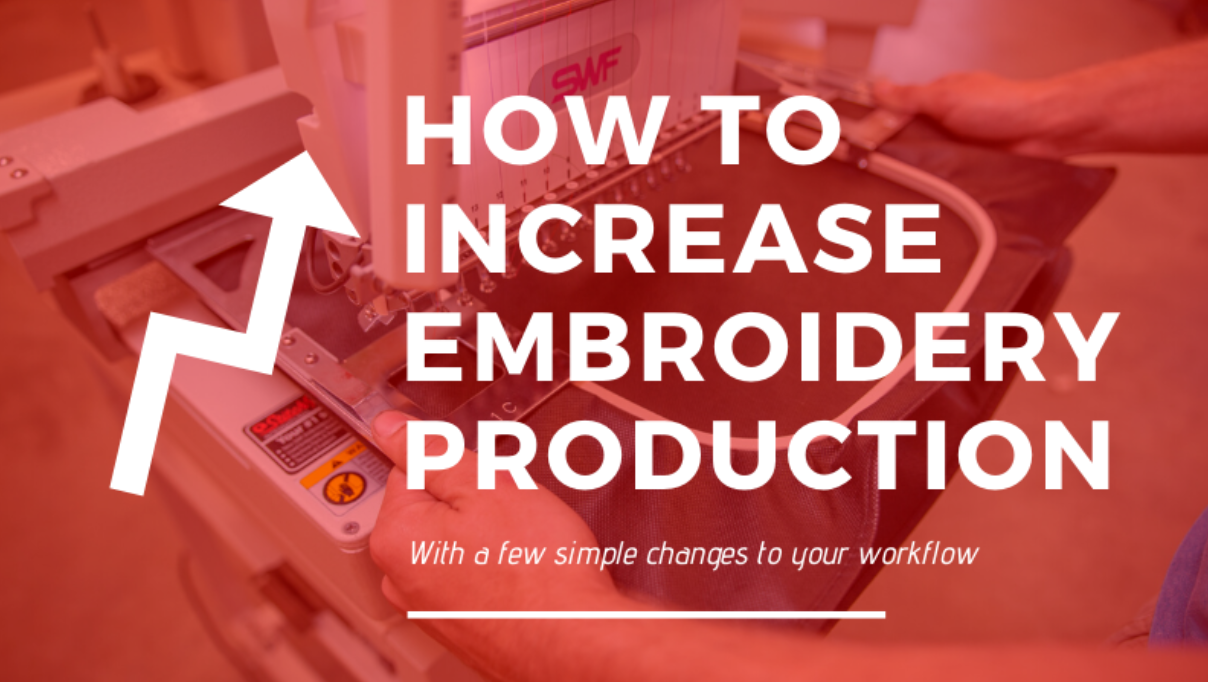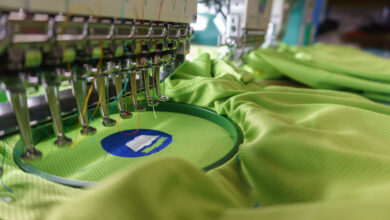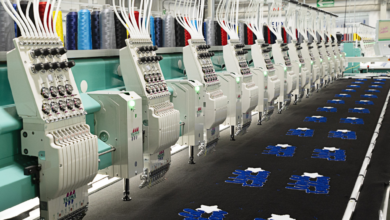With minimal prep work, these minor changes can speed up your embroidery projects and create a more efficient workflow. At no extra cost, here are six quick steps to implement today.
1. Organize your workspace
It’s important to organize before your workday gets going. Gather the materials you need and put each one in its place. Stack your backing neatly, along with your bobbins, extra thread, needles, and other embroidery supplies. Have everything within easy reach. Searching for what you need costs you time and money, so pre-organization streamlines your processes as you work on various projects.
2. Check your tensions
When changing thread weights or thread types (for example, metallic to polyester), always adjust your tensions. Use a tension gauge speeds up this process dramatically. Bobbin tension is just as important, as incorrect bobbin tension causes poor sewing quality and machine downtime.
3. Prep for your next order
After you have your next project hooped and ready to go, start getting that next order ready. Cut puffy foam for 3D embroidery jobs, select the correct backing, change hoops, and complete any other odds and ends for that specific job. Another huge time saver is tying up thread in your free time. Do not remove the thread you are currently using. Tie the next order’s thread on needles you are not using.
4. Clean your machine
A clean machine runs smoother and reduces ruined garments or hats. Brush off any debris and dust regularly and remove items that are no longer needed.
5. Replace bobbins between runs
One bobbin typically runs roughly 40,000 stitches. For example, if you are running a 9,000 stitch count order, then you should replace all of the bobbins at once, between the fourth and fifth job run. Since bobbins can be expensive, keep the old bobbins you remove for smaller stitch count orders or sample runs.
6. Slow your machine down for difficult orders
Running your unit at top speed is not always the solution. In rare cases, digitizing quality or detailed logos can be difficult to run smoothly. If you are breaking needles or constantly rethreading, slow your machine down a little at a time to find the optimal stitching speed for your garment. Slowing your machine’s speed can also increase quality when using satin stitches.
When running an embroidery business, you have deadlines that can become stressful and hectic, especially if you fall behind. Take a few moments out of your day to use these tips and increase your production with little to no effort.




